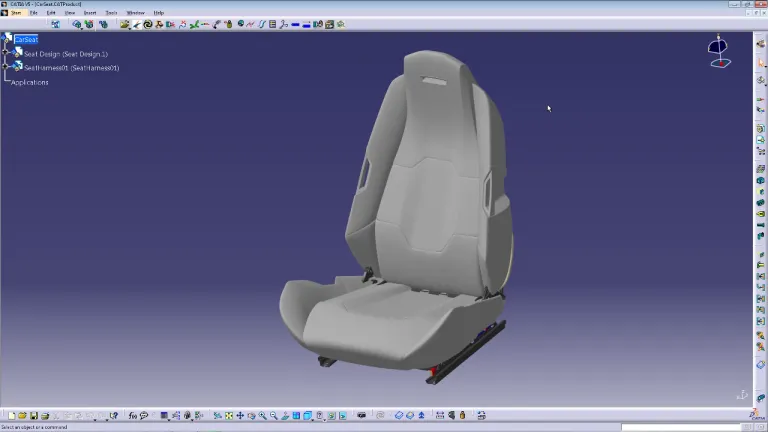CATELECTRE
The Cutting Edge of Electromechanical Integration
Seamless Integration for Electromechanical Design Harmony
CATELECTRE is a smart integration gateway merging electrical (ECAD) and mechanical (CATIA) design. It's ideal for crafting a full electromechanical model, blending 2D function with 3D mechanics. This tool harmonizes ECAD and CATIA's 3D electrical design, creating a unified digital mock-up that syncs both models. It enables updating harness data with 3D insights and enhancing CATIA with ECAD functional details. Catelectre excels in designing electrical harnesses interactively within CATIA V5's 3D electromechanical space, offering cutting-edge seamless integration.
Two-way synchronization of mechanical & electrical design
CATELECTRE can adapt existing electromechanical model data from most CAD software programs to a company’s design process, enabling complete two-way 2D/3D synchronization:
- Electric diagram data extraction & processing for 3D electromechanical design—automated export of ECAD connectors; automatic creation of electrical tree structure in CATIA; electrical reconciliation; identification of CATIA entities using ECAD information
- Use of 3D data extraction & processing—easier to manufacture wiring (sizing, lengths, weights, etc.), flatten harnesses & produce manufacturing drawings (form-board)
Join the conversation in the CATIA MBSE Cyber System User Community!
CATELECTRE FAQs
ECAD (Electronic Computer-Aided Design) and MCAD (Mechanical Computer-Aided Design) are two distinct types of CAD (Computer-Aided Design) software used for different purposes in the field of design and engineering.
1. ECAD (Electronic Computer-Aided Design):
- Purpose: ECAD software is used primarily for designing electronic systems like circuit boards, integrated circuits, and other types of electronic components.
- Functionality: It includes tools for schematics, electronic layout design, and often for simulating electronic circuits.
- Usage: Professionals such as electronic engineers and designers use ECAD to develop electronic systems and components like PCBs (Printed Circuit Boards), semiconductor devices, and other electronic hardware.
- Examples: Popular ECAD tools include Altium Designer, Cadence OrCAD, Eagle, and KiCad.
2. MCAD (Mechanical Computer-Aided Design):
- Purpose: MCAD software is designed for creating and analyzing mechanical systems. This includes parts and assemblies in machines, automotive components, industrial equipment, and more.
- Functionality: It provides tools for 3D modeling, drafting, simulation of physical behavior (like stress, strain, heat flow), and visualization of mechanical components.
- Usage: Mechanical engineers, product designers, and other professionals in the mechanical design field use MCAD for designing machinery, consumer products, automotive components, etc.
The primary difference between ECAD and MCAD is their focus: ECAD is geared towards electronic design, while MCAD is focused on mechanical components and systems. In complex products like smartphones or automobiles, which involve both electronic and mechanical components, integration between ECAD and MCAD is crucial for efficient design and collaboration. This integration allows for checking physical fit and compatibility between electronic and mechanical components, ensuring a seamless and functional design in the final product.
An ECAD (Electronic Computer-Aided Design) software is a specialized tool used for designing electronic circuits and systems. It assists engineers and designers in creating, analyzing, simulating, and producing printed circuit board (PCB) layouts for various electronic devices. ECAD software includes features like schematic capture, PCB layout design, component libraries, simulation capabilities, and design validation tools. It plays a crucial role in the development of modern electronics, powering devices ranging from smartphones to automotive electronics.
Also Discover
Learn What CATIA Can Do for You
Speak with a CATIA expert to learn how our solutions enable seamless collaboration and sustainable innovation at organizations of every size.
Get Started
Courses and classes are available for students, academia, professionals and companies. Find the right CATIA training for you.
Get Help
Find information on software & hardware certification, software downloads, user documentation, support contact and services offering



